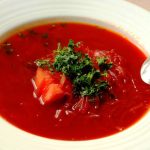What’s the first thing that pops into your head when you hear healthy food? Healthy nutrition? Is there such a thing or is it just a myth? Well, when it comes to healthy nutrition, there most certainly is, but we can’t really be sure when it comes to food. Based on our diet habits and food choices, nutrition can indicate whether we’re doing the right thing.
If you take a walk in Zagreb, you will see many bakeries, pastry shops, sandwich bars and “green shops” with “healthy food” and so I decided to look around these healthy food shops. Most frequently they offer vegetarian food, less frequently vegan food, very rarely raw food, and a lot of gluten free food.
When I see a sign saying “gluten free” I get itchy all over. I don’t have anything against gluten itself, people with celiac disease, gluten intolerant people or people with wheat allergies, but the problem is that a lot of these shops do not offer the food that they state they do. This is not the case only in Zagreb; the situation is the same all over Europe and around the world as well.
I would love it if the opposite were true, but in 95% of the cases, the situation is as I described it. And let me tell you why: if you want to try gluten free food, for example just for fun (and not for health reasons), you would go into one of these “healthy green shops” and ask for a gluten free meal. And guess what, to my big surprise, you would get one instantly. And this problem is just the tip of the iceberg.
If a place that sells ready meals wants to have a (Healthy Meal Standard) label stating that they serve gluten free food, it would first have to undergo adjustment of the HACCP system. It is basically a system that makes sure our food is safe to eat: it identifies specific hazards and measure units for their control to ensure food safety. Every place which serves food has to have one and places that serve gluten free food have to have an additional HACCP for making and serving gluten free food, which often means a separate kitchen or part of the kitchen, and having lab conditions needed in order to prepare gluten free food. A good example is Vincek Vis Vis at Tomićeva street.
Gluten free food is intended for people with celiac disease, a serious genetic autoimmune disorder in which gluten ingestion leads to damage in the small intestine, can lead to anemia, osteoporosis, cancer, growth delay in children and other problems. And, rest assured, this disease is not just a marketing trend for people with celiac disease. The risk of getting intestine cancer is three times greater for them than for the general population. The amount of gluten that celiac people can have per day is 21 part per million (ppm), which is a very, very small amount for a ready meal to contain.
And gluten is everywhere. Gluten is a sticky absorbing protein from wheat, rye and barley which is useful in food production, so we find it in all kind of foods: meat products, candy, even dairy. We can even find it in foods that are cross contaminated in food industry while processing, like chocolate and green peas. So gluten is all around us. Making your nutrition gluten free is a far greater challenge than you ever imagined. To illustrate my point better, people with celiac disease can inhale the amount of gluten they’re allowed per day (21 ppm) once they step into a bakery.
In conclusion, you can’t simply put a sign saying that something is gluten free and hope for the best. Making a gluten free ready meal is a process which includes five steps.
First, we need to adjust the HACCP system to be gluten free, and that is no small feat.
Second, your suppliers must also be certified as gluten free.
Third, people in charge of delivering the food from your suppliers must also be gluten free (so the food doesn’t get contaminated in the delivery process).
Fourth, your staff should be properly educated so there is no cross contamination in making gluten free meals.
And last but not least, step number five: the meals you offer have to be nutritionally balanced according to global nutrition standards. Only then can you call it a gluten free food / meal.
Everything else is just misleading for the consumers and it harms people who really need gluten free food – people with celiac disease. Moreover, bad marketing will not do anyone any good. The problem is that no one really controls what’s happening on the market. Most of these shops mainly rely on the global marketing “brag trend” of healthy food, serving anything that is green, gluten free, and in most of cases, unfortunately without any label that insures that what they say is true and with no knowledge about nutrition at all.









